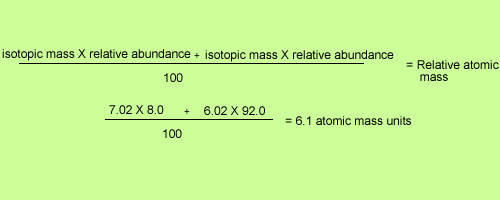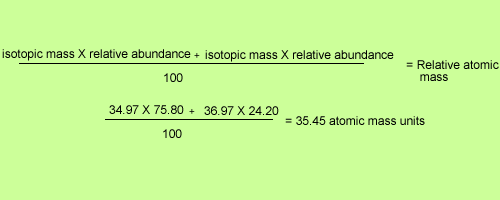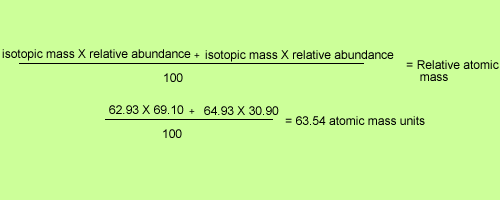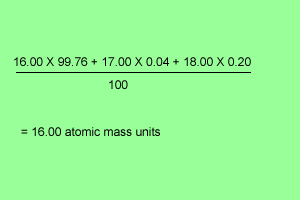




|
Relative
atomic mass(Ar)
|
||||||||||||||||||||||||||||||||||||
|
Elements contain atoms that
differ slightly in atomic mass. This difference, as we encountered earlier,
is due to different numbers of neutrons in the nucleus of atoms of the
same element. Although all atoms of the same element behave in an identical
manner chemically, they differ in mass. For example oxygen is made up
of three different isotopes, its isotopic composition is: So how do we come up with the relative atomic mass of oxygen as being 16? The relative atomic mass of any element is the weighted average of the isotopic masses. The calculations are as follows. Ar of oxygen = (16 X 99.76 + 17 X 0.04 + 18 X 0.2) / 100 = 16 atomic mass units. So the formula
is Try some exercises (click on the coloured cells for more information, double click to hide the information)
|
||||||||||||||||||||||||||||||||||||
An element "X" has two isotopes 22X and 24X. If the average atomic mass of X is 23.4 find the percent abundance of each isotope. Solution |
 |
|||||||||||||||||||||||||||||||||||
Continue with mass spectrum |
||||||||||||||||||||||||||||||||||||